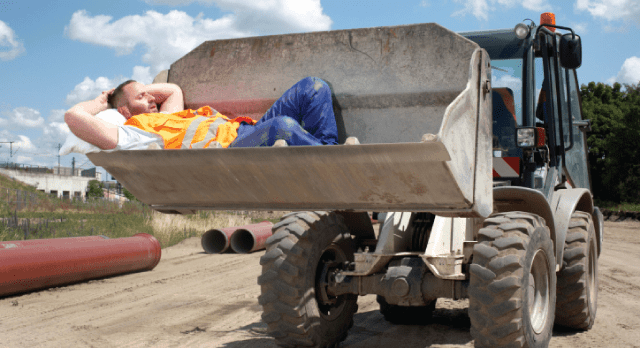
Suffer From Fatigue, and Safety Suffers Too
Workplace safety has many enemies that are constantly conspiring to reduce the morale, productivity and health of the jobsite. The fight is ongoing and like any fight it is best to be prepared for your enemy.
The most daunting of all safety enemies is fatigue. It is not easily measured or qualified and has only one known remedy: Sleep. While it can be hard to detect, fatigues effect on workers can be substantial and can negate all other safety precautions, training and procedures. Wake up your workplace by better understanding fatigue, its effect on people and how you can be prepared to combat safety's greatest enemy.
What is fatigue?
Fatigue is more than just being tired. It is an ongoing state of sluggishness that can lead to both mental and physical exhaustion and prevents people from operating at their normal levels. The effects of fatigue include difficulty concentrating, reduced motor function, poor decision making, slowed reaction times and reduced memory. As you know, any (or a combination) of these effects can be prime instigators of workplace accidents.
Is fatigue really safety's greatest enemy?
The seriousness of fatigue can be summed up with one telling statistic. According to research conducted by WorkSafeBC, the number of consecutive hours awake can be similar to drinking on the job:
- 17 hours awake is equivalent to a blood alcohol content of 0.05
- 21 hours awake is equivalent to a blood alcohol content of 0.08 (legal limit in Canada)
- 24-25 hours awake is equivalent to a blood alcohol content of .10
One of the most dangerous things any employee can do is come to work drunk and fatigue causes the exact same types of impairment. Furthermore, Alberta Human Resources and Employment reports that most accidents occur between midnight and 6 am and between 1-3 pm, the precise time when people are more likely to want sleep. To top it off, fatigue has been linked to large-scale events such as the Exxon Valdez oil spill and the nuclear accident at Chernobyl. Pretty serious.
What are the warning signs of fatigue?
Signs of fatigue include tiredness, depression, irritability, lose of appetite, increased susceptibility to illness, headaches and short-term memory problems. Lack of sleep is the main cause of fatigue so employees who work long shifts, split shifts, have less time off between shifts and those who work physically demanding jobs are at the highest risk.
How you can combat fatigue in the workplace
Once you know just how negative fatigue is you can take steps to prepare yourself. The main cause of fatigue is a lack of proper sleep, which is a recommended 7-8 hours a day. Making sure that proper rest is a priority is your best defense. An unbalanced diet high in sugars and too much caffeine can also exasperate the symptoms of fatigue so proper nutrition and hydration will help. Pack a healthier lunch or supplement the candy machine with more nutritious snacks.
Dim working conditions, high temperatures, excessive noise and monotonous tasks also compound fatigue. Workplaces can help by providing good lighting, comfortable temperatures and manageable noise levels whenever possible. Tasks should provide a variety of interest and change throughout the shift.
By keeping your eyes open to fatigue your workplace will be healthier, safer and maybe even less irritable!










